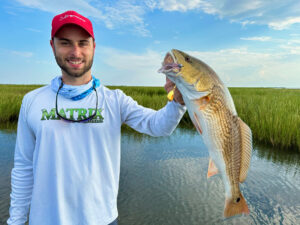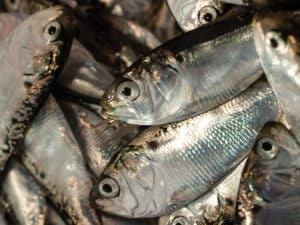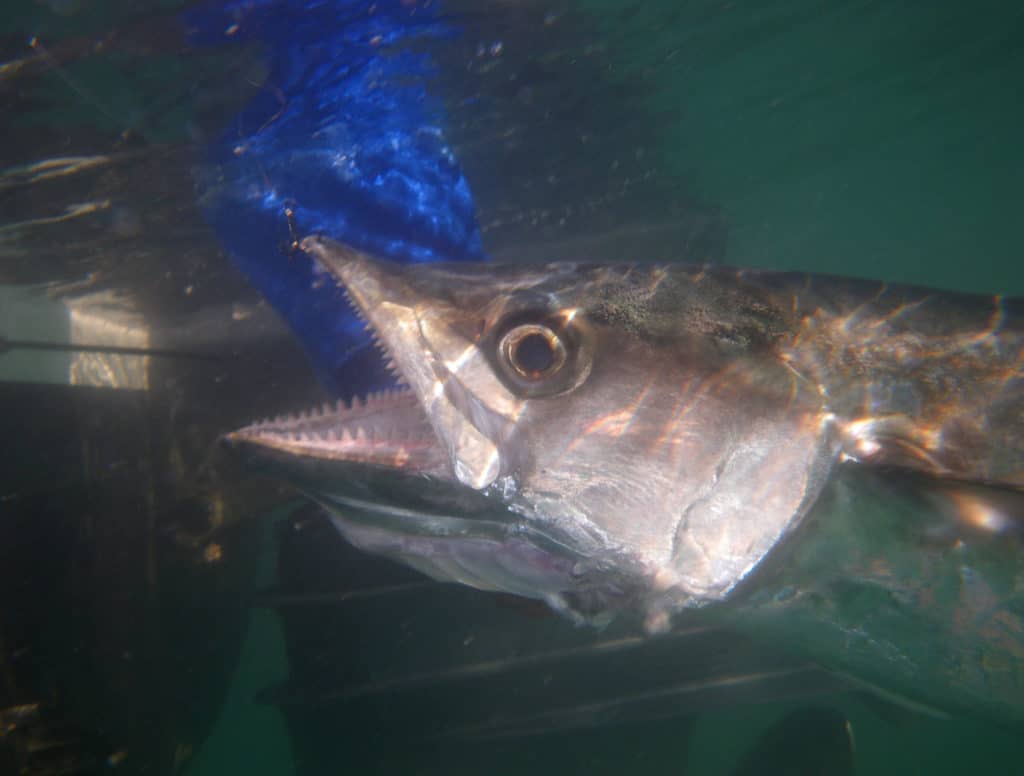
Big kingfish can be caught year-round in Key West, but in January and February more smokers migrate south from the Gulf of Mexico. With the right timing and tactics, anglers can catch the biggest kings of the year.
“It’s just so cool,” says Key West captain Casey Hunt, who grew up fishing in Pompano Beach, Florida. “Catching 20-pound kingfish here is like catching 5-pound kingfish out of Hillsboro Inlet. They’re so plentiful.”
And these big macks grow really big. A year ago, Hunt caught a monster that weighed 71 pounds in his boat. He notes that two days later, the same fish, gutted, weighed 72 pounds on a fish house scale.
In last January’s Key West Kingfish Mayhem Open Tournament, the winning fish came in at 51.7 pounds; seven other kings topped 41 pounds.
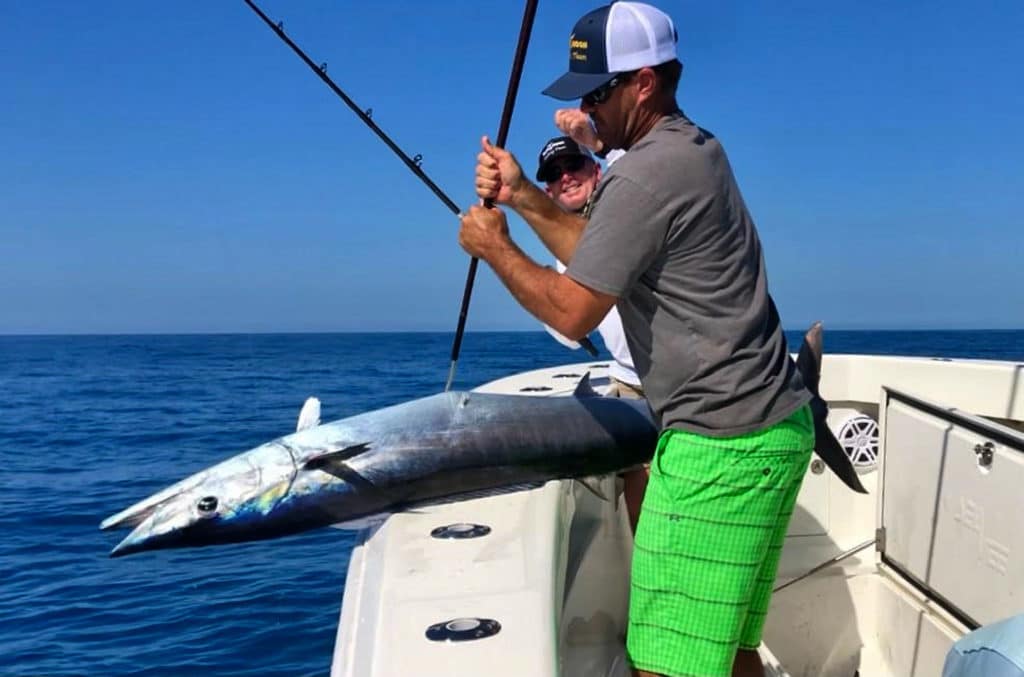
Kingfish Haven
Capt. Ron Mitchell, a South Florida angler who has fished Key West king mackerel tournaments for nearly 30 years, has caught many kings over 50 pounds, including a 63-pounder. He also got a firsthand look at a 78.66-pounder caught by another tournament team in 2015.
“There’s so much life there [in Key West], why would the fish leave?” says Mitchell, a member of the Southern Kingfish Association Hall of Fame. “It’s a big old ecosystem that’s holding tons of fish. It just seems like they get a little bigger and maybe they’re feeding a little differently, there are more in an area this time of year.”
Mitchell also thinks that improvements in boats, motors, electronics and tackle contribute to the increase in the number of big kingfish caught in Key West. For example, his boat Bandit, a 39 SeaVee Z with quad 400-horsepower outboards, allows him to cover much more water. Mitchell says it takes him one hour to get to spots that used to take him three hours, allowing him to fish longer. His boat features six livewells, each with two pumps in case one pump breaks or if he wants to increase water flow to accommodate hundreds of baits.
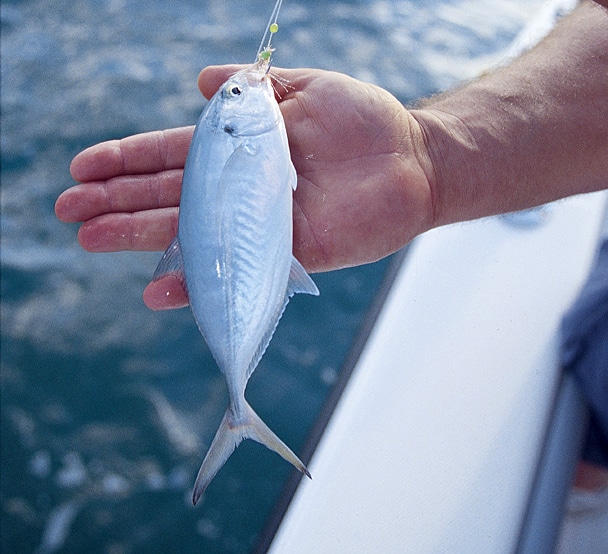
Smoker Kingfish Tactics
To target big kings, Mitchell emphasizes making the extra effort to select the liveliest baits. “I tell my guys to always find the best baits in the livewell. Look in there and find that bright-eyed, crisp blue runner or goggle-eye or speedo or whatever and put him out. He’ll get hit quicker than anything you’ve got in your spread,” he says.
Hunt uses his Simrad sounder to find bait and slight changes in water temperature. He also uses CMOR mapping on his multifunction display to find wrecks and other structure. “Sometimes the current hits the reef differently and there’s bait that’s balled up there,” he says. “Sometimes the water will get really cold, and when you find it bump up a little bit, even if it changes a half a degree, it can mean fish there.”
Winter weather also plays a role as front after front rolls through. “If you go down there for a week, you’re going to have a couple good days and you’re going to have a couple horrible days,” Mitchell says.
Before the front arrives, the kingfish start feeding, and then they shut down. After the front passes and the weather calms the fish start eating. “But I always think that if you put a beautiful bait in front of a kingfish, no matter what’s going on — they might not even be hungry — they see that thing and they’ve got to hit it.”
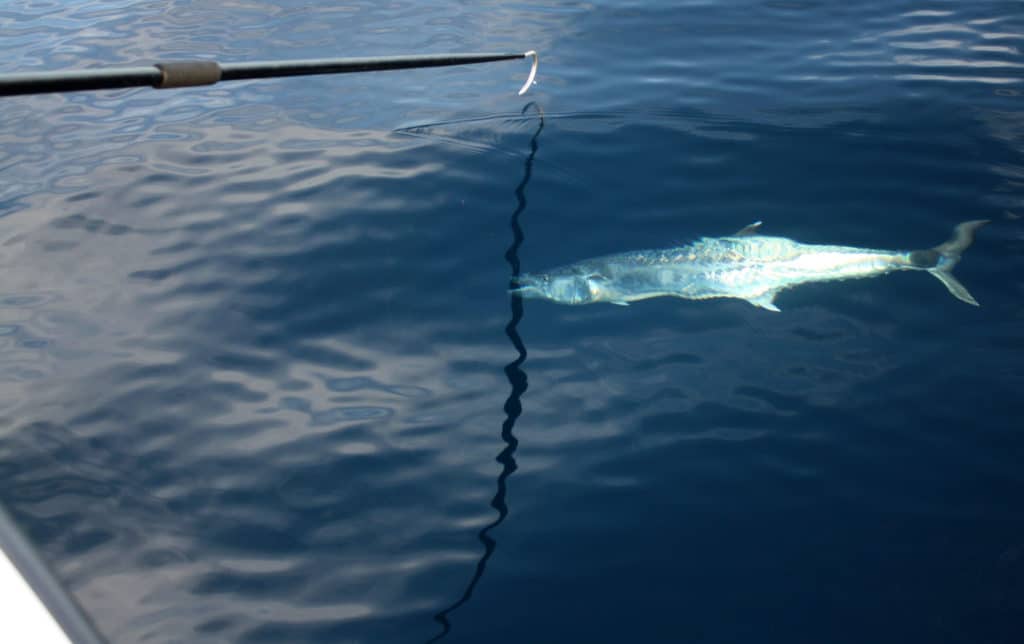
Finding Key West King Mackerel
Hunt, who runs CN-It Adventures, charters with his 26-foot Twin Vee and also guides anglers on their personal boats. He catches most of his big winter kings about 40 miles south of Key West along a ledge that drops from 60 to 120 feet.
“The bait is holding right where the ledge starts to drop down, and the kingfish are shooting up to eat the bait,” Hunt says, adding that yellowtail snappers also hang on that ledge. “You can fish for yellowtails there as well and hook a big kingfish. Someone caught a 61-pound king on a 12-pound outfit while yellowtailing. There are plenty of wahoos there, too, when the water is clean.”
Mitchell adds that most of his prime spots lie 40 to 45 miles out of Key West. Among his favorites include Tail End Buoy, the Rockpile, the Rocket, the Critter, eastern and western Dry Rocks, Cosgrove Shoals and the current hotspot, the Banana Bar.
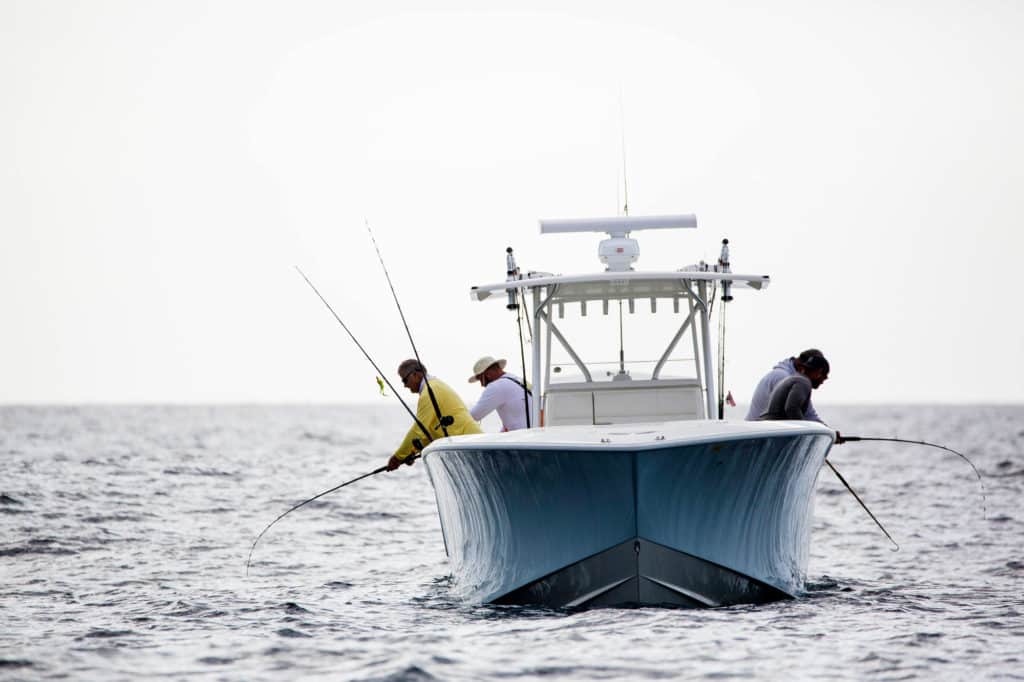
Kingfish Tackle and Bait
When targeting big kings, Hunt prefers a 3- to 5-pound live blue runner (his 71-pounder ate a runner) or yellowtail snapper. He bump-trolls the baits, taking the engines in and out of gear to keep the bow edging forward, and fishes only three flat lines at a time. He staggers the lines 30, 60, and 100 feet behind the boat. “The bite is so fast and furious; if the fish are there, they’re going to eat,” he says. There’s no waiting around.”
He doesn’t employ a downrigger line, usually a popular tactic for kingfish anglers, because a deep bait mostly likely will catch a black grouper (grouper season is closed until May 1), an amberjack or a jack crevalle.
Mitchell prefers to fish five lines: a big runner or bluefish 300 feet behind the boat, two flat lines, and two downrigger lines at different depths. However, when seas grow rough, he might not even set two baits. And when the bite goes off: “You throw a bait out the back of the boat, and it gets hit immediately. It can get that good.”
Like many kingfish tournament anglers, Hunt uses very light drag settings. Still, his 71-pounder took only 10 minutes to land. “We let them zip out 200 yards of line and wear themselves out, then we go after them with the boat,” he says.
Read Next: King Mackerel Fishing Tips
His tackle includes Accurate Valiant rods with Accurate Tern TX-500X conventional reels, which have a fast 6-to-1 gear ratio for quickly gathering line after a big king makes its initial run. He spools the reels with 20-pound Momoi Diamond Illusion monofilament line with a 20-foot leader of 30-pound Diamond fluorocarbon and 3 feet of 30-pound AFW titanium leader to prevent cut-offs.
But even if a king bites through the leader or otherwise breaks off, chances are the fertile Key West waters will deliver many more opps to smoke one.



